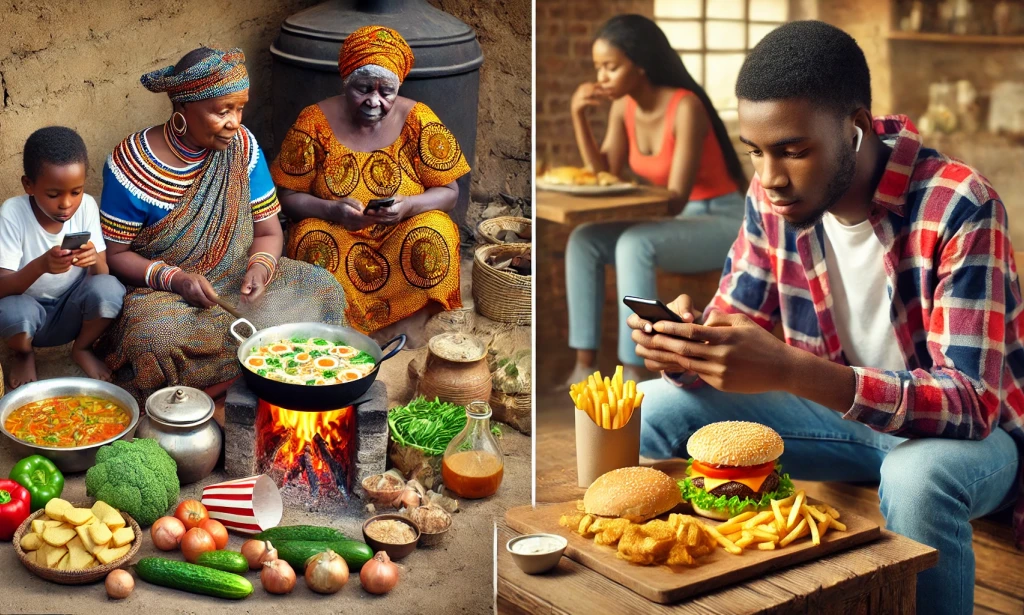Do you ever miss the days when the aroma of a home-cooked meal filled the house, and family dinners were a cherished tradition? Back then, food was more than just fuel, it was a way to bond, celebrate, and nourish both the body and soul. Fast forward to today, and life moves at a much faster pace. Convenience rules, and fast food is often the go-to option for many families.
But what have we lost in the process? Let’s take a trip down memory lane and compare how our eating habits have changed over the years.
1. From Family Dinners to Eating on the Go
Then: Sitting around the dinner table with family was a daily ritual. It was a time to share stories, connect, and enjoy a meal made with love.
Now: Busy schedules mean more people eat in front of the TV, at their desks, or in the car. Family meals have become rare, and fast food is often the quick fix.
2. From Fresh Ingredients to Processed Foods
Then: Meals were made from scratch using fresh, locally sourced ingredients. There were no complicated labels, just real food from the farm or market.
Now: Processed and packaged foods dominate grocery store shelves. With artificial additives, preservatives, and excessive sugar, many modern meals lack the natural goodness our grandparents enjoyed.
3. From Home-Cooked Meals to Fast Food Culture
Then: Cooking was a skill passed down through generations. Parents and grandparents took pride in preparing traditional meals that nourished the family.
Now: Takeout, drive-thrus, and frozen dinners have replaced home cooking. Many people don’t have the time or the desire to cook, relying instead on fast, convenient options.
4. From Seasonal Eating to Year-Round Availability
Then: People ate what was in season, enjoying the freshest fruits and vegetables at their peak. Eating this way naturally supported health and sustainability.
Now: Thanks to globalization and food preservation technology, you can find almost any food year-round. But while availability has increased, freshness and nutrition have often taken a hit.
5. From Mindful Eating to Distracted Eating
Then: Mealtime was an experience. People sat down, focused on their food, and truly enjoyed every bite.
Now: Eating while scrolling through social media, watching TV, or working has become the norm. This mindless eating leads to overeating and a disconnect from the joy of food.
6. From Cooking Skills to Convenience Foods
Then: Knowing how to cook was a basic life skill. Recipes were passed down, and families took pride in making meals from scratch.
Now: Many young people rely on food delivery apps, instant noodles, and frozen meals, with little idea how to prepare a meal from raw ingredients.
7. From Eating for Nourishment to Eating for Convenience
Then: People ate to nourish their bodies and maintain health. Meals were balanced, wholesome, and full of essential nutrients.
Now: Many meals are chosen based on speed and cravings. Junk food and sugary drinks have become everyday staples, leading to rising health issues like obesity and diabetes.
8. From Community and Food to Individualism and Fast-Paced Living
Then: Food was about togetherness. Whether at home, a community gathering, or a festive celebration, meals brought people closer.
Now: With modern life being more fast-paced and digital, eating has become more solitary. Many people grab a quick bite alone, missing out on the social connection that shared meals once provided.
While modern life makes convenience a necessity, we don’t have to lose the good things from the past. Cooking more at home, eating fresh foods, and making time for family meals can help us reconnect with the joy of eating.

You must be logged in to post a comment.